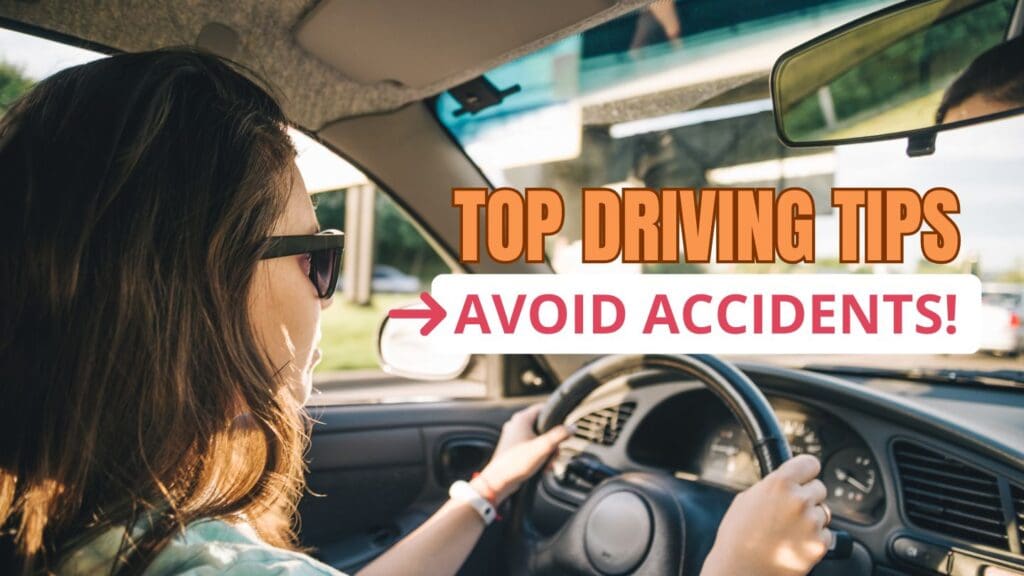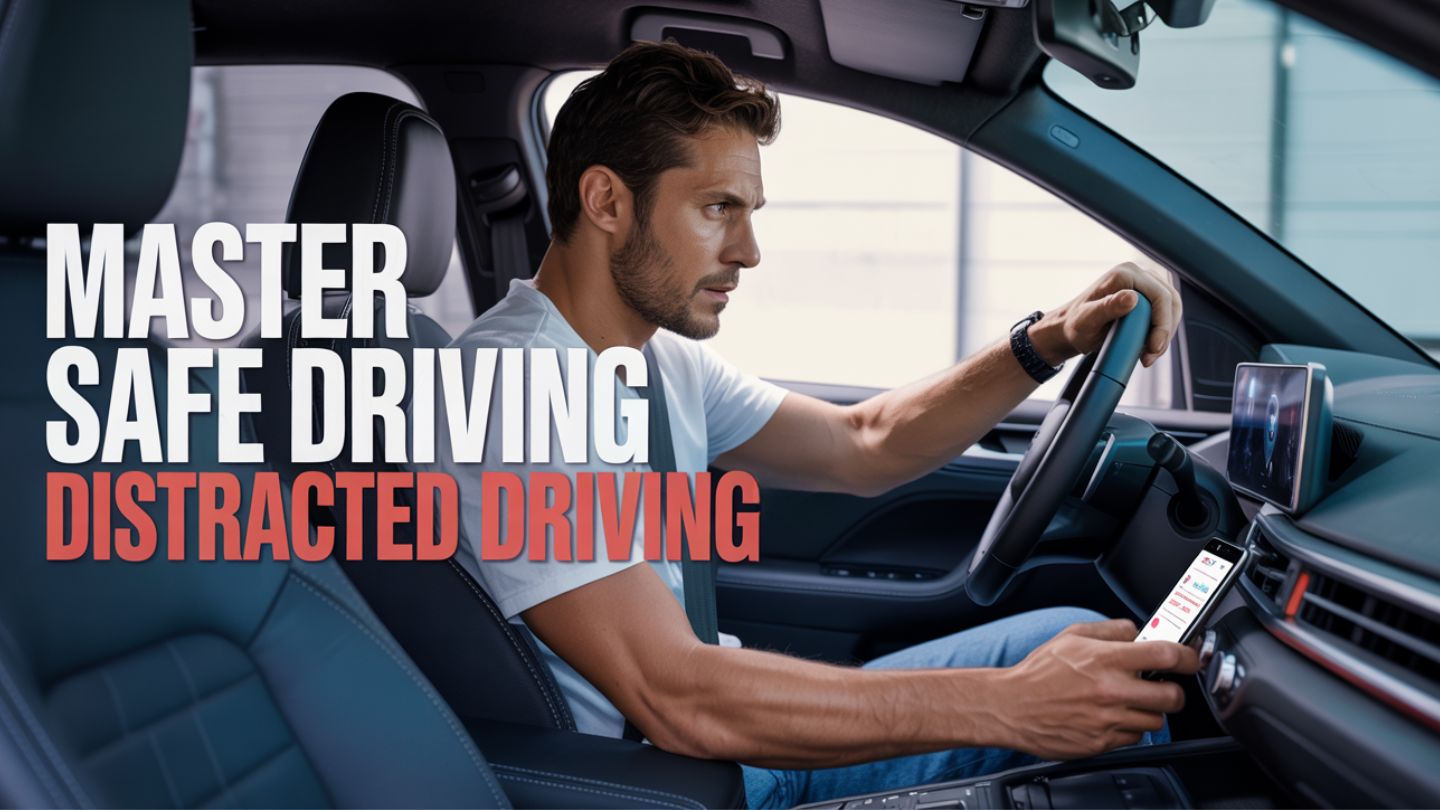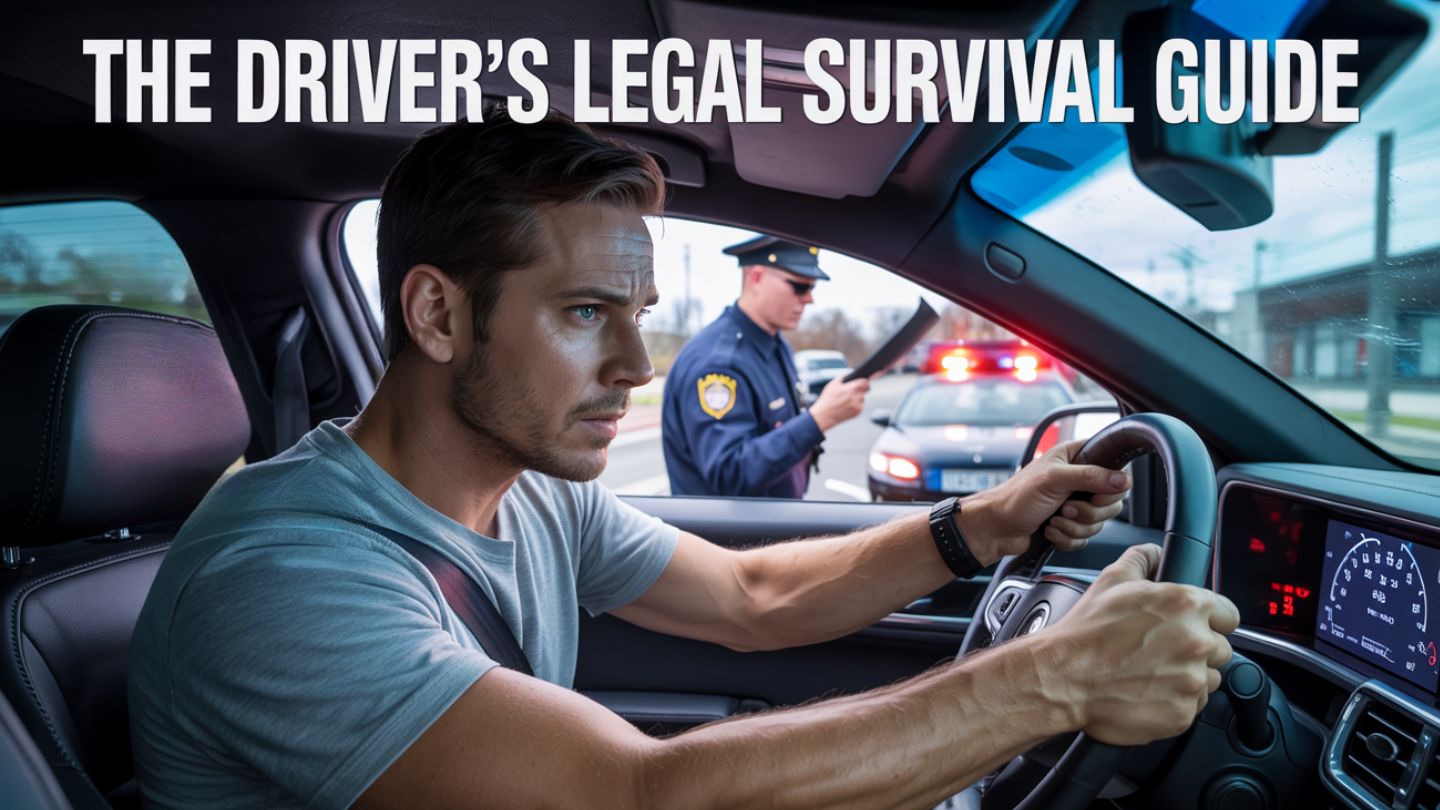Defensive driving ensures safety, especially for beginners. In this blog, we will explore what are the top defensive driving tips for beginners, focusing on awareness, anticipation, and preparation to avoid accidents and stay safe on the road.
Key Takeaways
- Understanding your vehicle’s features enhances safety and confidence, especially for new drivers.
- Maintaining focus on the road by avoiding distractions and maintaining a safe following distance is crucial for preventing accidents.
- Planning routes ahead and taking defensive driving courses can significantly improve driving skills and contribute to overall road safety.
Understand Your Vehicle Inside and Out

Understanding your vehicle thoroughly is a crucial step toward becoming a safer driver. Familiarity with its features boosts your confidence and ensures safe and efficient operation. Adjusting your mirrors, using headlights correctly, and managing dashboard controls can significantly lower your accident risk.
Mastering vehicle controls makes the learning process smoother and less intimidating for new drivers. Knowing how to operate your vehicle in different situations, especially emergencies, can improve reaction times and potentially save lives.
Each vehicle is unique. Whether driving a small or large vehicle or other vehicles, learning its nuances helps you drive safely and handle various road conditions better in a smaller vehicle. Vehicles play a crucial role in this understanding.
Read more : What Are the Top Defensive Driving Tips for Beginners?
Focus on the Road
Focusing on the road is crucial for safe driving. Distracted drivers are a leading cause of accidents, so limit distractions to stay aware of your surroundings. Activating the ‘do not disturb’ mode on your phone can help eliminate notifications while driving.
Avoid multitasking behind the wheel, as activities like:
- eating
- adjusting the radio
- using a cell phone can divert your attention. Focusing entirely on driving helps develop good habits and ensures safety. Parents practicing attentive driving can positively influence teen drivers.
Properly stowing items and securing all passengers, especially children, helps maintain driving focus. Keeping your attention on your own driving to stay focused rather than being distracted by others is important when everyone is properly buckled and wearing seat belts.
Read more : Top Tips on How to Prevent Distracted Driving
Maintain a Safe Following Distance
Maintaining a safe following distance is essential to prevent rear-end collisions and allow enough reaction time. With 29% of annual traffic accidents being rear-end collisions, the three-second rule is a useful guideline. Stay at least three seconds behind the vehicle in front to react appropriately to sudden stops or changes in speed.
In adverse weather conditions like heavy rain or snow, increase your following distance, slow down, and stay alert. Allowing enough space for aggressive drivers and fellow drivers can help prevent confrontations and maintain a safe distance.
Anticipate the Actions of Other Drivers
Anticipating other drivers’ actions is key to defensive driving. Expect unpredictable behavior from other road users, often influenced by distractions or unfamiliarity with traffic patterns. Proper signaling, effective use of turn signals, and awareness of blind spots can help avoid accidents.
In stressful driving situations, keeping your composure is crucial. If you feel unsafe or are being tailgated, move to a safe area or contact emergency services to avoid escalation.
Obey Speed Limits
Observing speed limits fosters a safer environment for all, including pedestrians. Following speed limits prevents accidents and enhances traffic flow. Speeding reduces reaction time and increases the likelihood of losing control of the vehicle.
For new drivers, adhering to speed limits or going slightly below them ensures safety and builds confidence. Safe speed saves lives.
Use Turn Signals Effectively
Turn signals communicate your driving intentions to other drivers, helping avoid misunderstandings and contributing to safety. Signal at least five seconds before changing lanes and three to four seconds before making a major turn.
Consistently using turn signals enhances safety for everyone. Activate your blinker at least 100 feet before a turn to ensure other drivers are aware of your intentions.
Be Prepared for Different Weather Conditions

Different weather conditions require special preparation and caution, especially in bad weather and severe weather. Before your journey, check the weather, road conditions, and traffic. In inclement weather, avoid high-beam headlights as they can impair visibility; use regular headlights, yellow light, or fog lights instead.
In rain, follow these safety tips:
- Ensure your windshield wipers are in good condition to maintain visibility and avoid accidents.
- Drive in the middle lanes to avoid hydroplaning on pooled water.
- Use headlights during rain or in tunnels to greatly enhance visibility.
In snowy conditions, consider the following safety tips:
- Allow extra time to reach your destination due to slower travel speeds.
- Test your brakes in a safe area before venturing onto busy roads; it’s important to brake early when conditions are poor.
- Watch for wet-looking areas that might be icy, as black ice can create possible hazards.
Avoid Aggressive Driving
Avoid aggressive driving behaviors to promote road safety. Teen drivers often tailgate, a common aggressive behavior. If tailgated, move to a right hand lane to allow passing or pull into a well-lit parking lot on single-lane roads to prevent confrontation and adhere to traffic rules.
Staying calm and composed helps avoid aggressive driving, reduce road rage, and contributes to a safer driving environment for everyone.
Regular Vehicle Maintenance
Regular vehicle maintenance ensures safe driving. Neglecting it can lead to costly repairs and potential safety hazards. Over $60 billion worth of necessary maintenance is not performed each year.
To maintain your vehicle and ensure safer driving, consider the following tips:
- Inspect your vehicle’s coolant system every two years to avoid deterioration.
- Perform routine battery checks to prevent starting issues by cleaning corrosion from terminal connections.
- Consult your owner’s manual for the recommended preventive maintenance schedule.
Never Drive Under the Influence
Driving under the influence of alcohol or drugs impairs essential abilities like thinking and coordination, significantly increasing the risk of car accidents. Every 39 minutes, someone dies in a drunk-driving crash, resulting in over 13,000 fatalities annually.
Driving while impaired, whether by legal or illegal substances, poses a risk to everyone on the road. Always choose a designated driver or use public transportation to avoid dangerous situations.
Stay Calm and Collected
Staying calm and collected maintains focus and safety while driving. Managing your emotions prevents aggressive driving responses and ensures a safer driving environment.
Taking deep breaths activates natural calming mechanisms, helping you remain composed during stressful situations. Staying calm helps maintain control over your vehicle and ensures safe driving in any scenario.
Plan Your Route Ahead
Planning your route ahead prevents distractions from adjusting navigation systems while driving. This proactive approach helps avoid distractions, reduces stress, and helps avoid aggressive driving incidents. To ensure a smooth journey, it’s essential to plan ahead.
Allowing ample driving time for your journey helps avoid rushing and potential hazards, ensuring a safer driving experience. Plan your driving route ahead and stay aware of any road conditions or road construction that might affect your trip.
Distracted driving is a major safety concern, but with the right strategies, it can be effectively minimized. Key tips on how to prevent distracted driving include preparing before you start driving, such as adjusting mirrors and setting up navigation, limiting cell phone use by activating driving modes, and managing passengers to reduce interruptions. By staying focused and leveraging technology like hands-free devices and in-car safety features, drivers can significantly enhance road safety and reduce the risks associated with distractions.
Defensive Driving Courses

Defensive driving involves awareness of your surroundings and preparation for unexpected situations. Enrolling in defensive driving courses can enhance skills and prevent accidents. These courses cover important topics like traffic laws, defensive driving techniques, and defensive drivers’ crash prevention techniques.
Many defensive driving courses are available online, allowing you to complete them at your own pace. These courses are especially beneficial for beginners, teaching essential skills to be a good defensive driver and drive defensively for safer driving.
Drive Safe, Drive Smart
Defensive driving is a critical skill that sets the foundation for safer roads and more confident drivers. By understanding your vehicle, staying alert, maintaining safe distances, and preparing for unpredictable conditions, beginners can build habits that drastically reduce the likelihood of accidents. Incorporating these practices ensures not only your safety but also the safety of everyone on the road.
If you’re ready to take control of your driving skills, our defensive driving class in Texas is here to help. At Court Approved Defensive Driving, we provide comprehensive, state-approved courses designed to enhance your knowledge and confidence behind the wheel. Our services are available in Plano, Lubbock, Houston, Fort Worth, and Arlington, so no matter where you are, expert guidance is always within reach. Whether you’re looking to lower your insurance rates, dismiss a ticket, or simply become a better driver, we are committed to making the process simple and effective for you. Contact us today and take the first step towards mastering the road with confidence.
Frequently Asked Questions
What is the cost of the Texas defensive driving course?
The Texas defensive driving course typically costs around $25, making it an affordable option to improve your driving skills and potentially reduce your insurance rates!
How long does a Texas Defensive Driving Class typically last?
A Texas Defensive Driving Class typically lasts six hours, making it a manageable commitment for improving your driving skills! Taking this time can lead to safer habits and possible insurance discounts.
How often can you take a defensive driving course for ticket dismissal in Texas?
You can take a defensive driving course for ticket dismissal in Texas once every 12 months. So, if you have a ticket, consider this opportunity to keep your record clean and enhance your driving skills!
How many modules are in the defensive driving course in Texas?
The defensive driving course in Texas typically consists of six to twelve modules. Choosing the right one for you can enhance your driving skills and keep you safer on the road!
What is one benefit of completing the Texas defensive driving course?
Completing the Texas defensive driving course can help you dismiss a traffic ticket and potentially lower your insurance premium. This not only improves your driving record but also saves you money!



